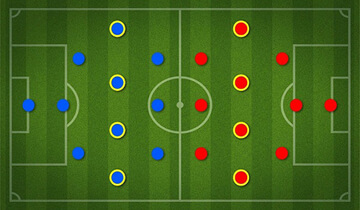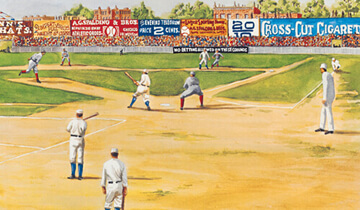Fouls and penalties are an important part of soccer rules and can impact the flow and outcome of a game. Understanding the different types of fouls and resulting punishments is key for players, coaches, and fans.
Types of Fouls
Some common fouls in soccer include tripping, pushing, charging, and holding. Tripping occurs when a player uses their legs or feet to make contact with an opponent’s legs, causing them to stumble or fall. Pushing involves using the body or arms to physically move an opponent. Charging happens when a player contacts an opponent with their shoulder or body. Holding grabs onto an opponent’s body or uniform to restrict their movement.
Other fouls include handballs (using the hands or arms deliberately) and dangerous plays that could injure opponents. Fouls can be committed against both attacking and defending players.
Penalties
Fouls can result in different punishments depending on their severity. Minor fouls lead to direct or indirect free kicks. More serious fouls in the penalty area result in penalty kicks - a free direct shot from 12 yards out with only the goalkeeper defending. Yellow and red cards can also be given for unsportsmanlike behavior or serious fouls.
Understanding fouls and penalties in soccer makes it easier to follow gameplay and strategy. While fouls interrupt the flow of the game, they help enforce rules and fair play.
For anyone new to the world of soccer, or even for seasoned enthusiasts, it can sometimes be challenging to understand the myriad of rules that govern the game. The fundamental question, “how many players are on a soccer team?” often opens up a plethora of other inquiries.
Types of Fouls
Direct kicks
There are two main types of fouls in soccer: direct kicks and indirect kicks. Direct kick fouls are considered more serious and result in a direct free kick or penalty kick if committed by a defender inside their own penalty area. There are several offenses that result in a direct free kick:
- Kicking or attempting to kick an opponent
- Tripping an opponent
- Jumping at an opponent
- Charging an opponent in a violent or dangerous manner
- Striking or attempting to strike an opponent
- Pushing an opponent
- Making contact with the opponent before touching the ball when tackling
- Holding an opponent
- Spitting at an opponent
Some examples of direct kick fouls are kicking a player’s legs out from under them, slide tackling from behind, elbowing another player in the head, and purposefully handling the ball as a defender inside the penalty area. These fouls are considered dangerous plays and are punished with a direct free kick or penalty kick.
Indirect kicks
Indirect kick fouls are less serious offenses that result in an indirect free kick for the opposing team. The indirect free kick must touch another player before a goal can be scored. Indirect kick fouls include:
- Dangerous play such as high kicking near another player’s head
- Impeding the progress of an opponent without contact, such as running between the opponent and the ball
- Preventing the goalkeeper from releasing the ball from his/her hands
- Committing a foul against a teammate
- Goalkeeper taking more than 6 seconds to release the ball into play
- Goalkeeper touching the ball again with his/her hands after releasing it
Examples of indirect kick fouls include playing in a dangerous manner, obstructing an opponent from playing the ball, or the goalkeeper holding the ball too long. These fouls tend to be less serious but still warrant an indirect free kick.
Handling the ball
Handling the ball is penalized differently than other fouls in soccer. Deliberately handling the ball is considered a direct kick foul in almost all cases except when committed by a goalkeeper inside their penalty area. Goalkeepers are allowed to handle the ball when inside their team’s 18-yard box. If a goalkeeper handles the ball outside this area, it is a direct kick foul.
For all other players, deliberately using hands or arms to touch or control the ball is considered a handball. This includes using the hands or arms to block or control a shot or pass. Accidental contact, such as the ball deflecting off a player’s body into their arm, is usually not called. Players cannot use their hands or arms to make themselves bigger in order to block the ball. This usually results in a handball foul.
Disciplinary Actions
In addition to free kicks, fouls can also result in disciplinary action being taken against the offending player such as a yellow card caution or red card ejection. Second yellow cards or deliberate fouls that endanger an opponent often result in a red card send off.
Cards and Penalties
Referees use cards to signal punishments:
Yellow card: a warning for reckless fouls, persistent infringement, delaying restart, dissent, unsporting behavior.
Red card: ejection for violent conduct, serious foul play, denying goal opportunity through a foul.
Referees in soccer matches use colored cards to indicate disciplinary actions against players. The cards are an efficient visual signaling system that clearly communicates punishments to players, coaches, and spectators. The use of cards enables referees to maintain control and enforce the rules of the game.
The yellow card is used to indicate a formal warning for behavior that violates the rules. Some common infractions that merit a yellow card include reckless fouls, persistently infringing on rules, deliberately delaying a restart, showing dissent towards officials, and unsporting conduct. When a player receives two yellow cards in the same match, it results in a red card ejection. So the yellow card serves as an initial caution to deter further misconduct.
The red card signifies ejection from the current match and suspension from the next match. It is used for more serious offenses. A straight red card is shown for violent conduct such as punching, serious foul play that risks injuring the opponent, denying the opposing team a clear goal-scoring opportunity through a foul, spitting, and offensive or insulting language. Even if play has not been stopped, the referee can go back and issue a red card retrospectively if a serious infraction was missed earlier.
The use of yellow and red cards in soccer has helped improve player conduct and protect player safety. The system provides clarity and consistency in enforcement. It gives referees a recognizable visual tool for managing matches. While ejections can significantly alter match outcomes, the threat of suspension following a red card serves as a strong deterrent to misconduct. The introduction of yellow and red cards has helped curb unsporting behavior and made soccer more fair and enjoyable to play and watch.
Penalty kick awarded for direct kick fouls by defender in own penalty area.
The penalty kick is one of the most game-changing decisions in soccer. It is awarded when a player commits a direct free kick offense inside their own penalty area. This includes fouls such as tripping, pushing, charging, and handling the ball. A penalty kick results in a one-on-one shot from 12 yards out with only the goalkeeper defending. Since 76% of penalties are scored, it is an extremely advantageous opportunity that often decides matches.
The principles for penalty kicks are codified in Law 14 of the Laws of the Game. When a defender commits a direct free kick foul in the penalty area, play is stopped and the attacking team is awarded a penalty kick. All players besides the kicker and goalkeeper must stand outside the penalty area and penalty arc until the ball is kicked. The goalkeeper must stay on the goal line until the ball is struck. If these requirements are infringed and a goal is scored, the penalty is retaken if the infringement impacted the kicker. If no goal is scored, there is no retake.
Defenders must be careful when defending inside the 18-yard box due to the massive implications of giving away a penalty. Even unintentional handballs and minor fouls will result in a penalty kick if they deny a scoring chance. The referee ultimately judges whether an offense is worthy of such a significant punishment. Factors like the speed of play, proximity of attacking players, arms in unnatural positions, and genuine attempts to play the ball are considered.
Penalty decisions are often game-changing moments that are analyzed closely after matches. While they can be controversial, penalty kicks serve an important role in soccer. They provide appropriate punishment for goal-denying fouls in the penalty area and a major incentive for defenders to play carefully around their own goal. When applied correctly by officials, penalties uphold fairness by giving the attacking team a major advantage after a serious foul.
Restart of Play
Direct or Indirect Free Kick
Play is restarted with a direct or indirect free kick where the foul occurred. A direct free kick can be shot directly into the goal to score. An indirect free kick must touch another player before a goal can be scored.
The type of free kick is determined by the type of foul that occurred:
- Direct free kick fouls include kicking, tripping, tackling, jumping at, charging, striking, pushing, holding an opponent, and handballs.
- Indirect free kick fouls include dangerous play and impeding an opponent.
Defenders must give the required distance from a free kick based on the location - 10 yards for most kicks, except in the goal area when defenders must be outside the area.
Penalty Kick
A penalty kick is awarded if a direct free kick foul occurred by the defense inside their own penalty area. The ball is placed on the penalty mark and the attacker takes a kick with only the goalkeeper defending. All other players must be outside the penalty area and arc.
Drop Ball
Play is restarted with a drop ball if the referee stopped play for a reason other than a foul, like an injury. The referee drops the ball between players from both teams, who then contend for possession once it hits the ground. Play restarts when the ball touches the ground.
Understanding Soccer Fouls and Penalties - Types of Fouls
There are several common types of fouls in soccer:
Tripping, Pushing and Obstruction
Tripping, pushing, and obstruction fouls involve using your body to unfairly impede the progress of an opponent who has the ball. These are dangerous plays that can lead to injuries.
Handballs
A handball foul occurs when a player other than the goalie intentionally plays the ball with their hand or arm. This can give an unfair advantage and lead to a free kick.
Dangerous/Reckless Play
This foul covers things like high kicking near another player’s head or overly physical shoulder-to-shoulder charges. Even if you get the ball, endangering another player will be called.
Penalty Cards
Referees have cards they can use to reprimand and punish players:
Yellow Card
A yellow card is a caution to a player. It doesn’t lead to an ejection, but two yellows in one game equates to a red card.
Red Card
A red card ejects the player from the current game and disqualifies them from the next game. It can be issued straightaway for serious fouls or as a result of two yellows.
Resulting Plays
Fouls lead to two types of resulting plays:
Free Kicks
A free kick is an unchallenged kick awarded to the fouled team. It will be direct or indirect based on the foul type.
Penalty Kick
A PK is awarded when a foul occurs in the offending team’s penalty area. It’s a one-on-one free shot from the penalty spot against the goalie.
Key Takeaways
In summary, understanding fouls like tripping, handballs, and reckless play, along with the cards policy and resulting free/penalty kicks is essential for soccer players, coaches and engaged fans who want to be knowledgeable about the game. Knowing the rules and punishment system leads to smarter play.
Conclusions
Fouls and penalties are crucial elements of soccer that require a nuanced understanding. Players must avoid dangerous plays for the safety of all participants. Defenders in the penalty area need to be especially mindful since conceding a penalty can change a match. Officials have the challenging task of making foul calls and issuing disciplinary cards in real time. Their decisions can directly alter the complexion of games. For spectators, grasping the rules around fouls enables a deeper appreciation of gameplay and strategy.
While they interrupt flow, fouls serve the important purpose of enforcing fairness and protecting skillful play. Soccer would descend into chaos without rules against unsafe conduct. Cards create accountability and incentives for sporting behavior. The direct free kick, indirect free kick, and penalty kick each provide appropriate punishment suited to the offense. As frustrating as they may be, fouls and penalties exist for good reason in soccer. Mastering this intricate aspect of the laws deepens one’s knowledge and opens up new nuances to enjoy. With an informed perspective, even controversial calls can become opportunities to engage more profoundly with the beautiful game.
The summary covers key points like the need to understand fouls for players, officials and fans. It emphasizes how fouls and cards, when properly enforced, ultimately uphold fairness and safety. And it concludes that truly comprehending this complex facet of soccer enriches a spectator’s experience and appreciation of the sport.







































